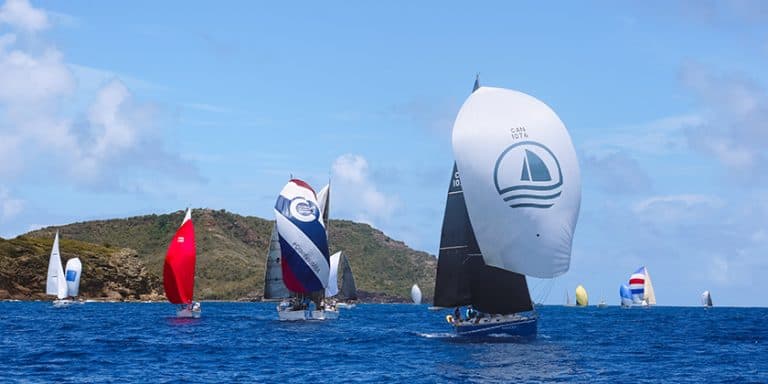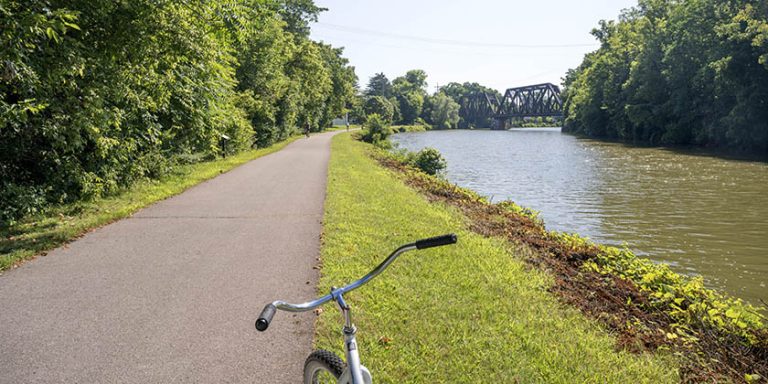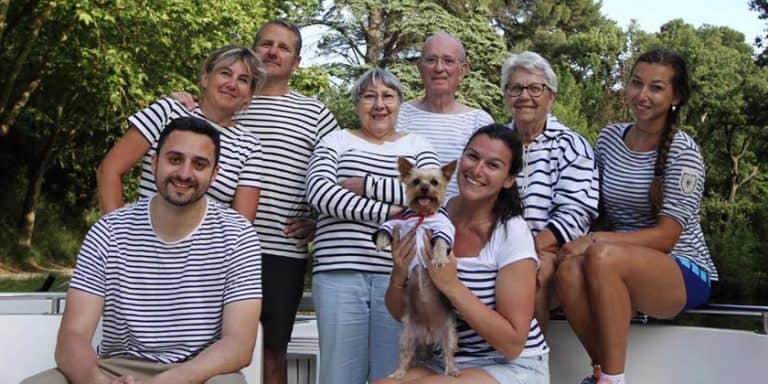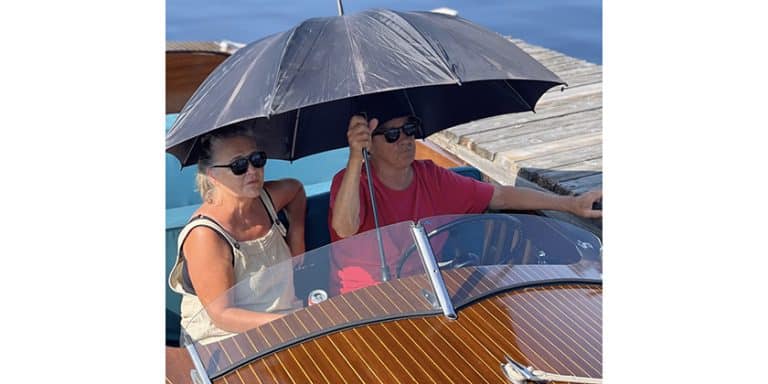The Madeira Archipelago, the Garden of the Atlantic
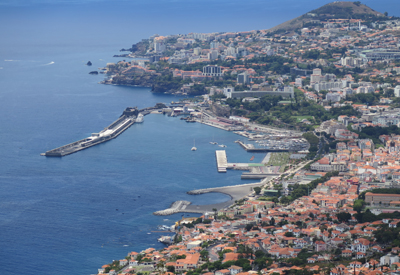
Story by Sheryl Shard • Photos by Paul and Sheryl Shard
The first time we sailed to Madeira we wondered if the island had vanished. Or at least that’s how it appeared. Actually, it didn’t appear. Not when we thought it should have.
That was in 1991 before the days of affordable GPS. On that first voyage, we were relying on a sextant, SatNav and dead reckoning. By our calculations, we were five miles off a massive mountainous landform in the middle of the Atlantic Ocean.
Then suddenly, as if by magic, it appeared before our eyes. Immense and majestic with towering cliffs and misty summits. Rock solid. Right on course.
This was our first experience with a surface mist common on the seas surrounding this mid-Atlantic archipelago. It looks like a perfectly clear day in these conditions – blue skies and sunshine – but visibility is reduced at a low surface level. You can get very close to something without seeing it. Then, as if a veil is lifted, it suddenly appears…as if by magic.
Our return voyage to Madeira began in St. Martin in the Caribbean in early May. The trade winds are well established then making it a good time for a west-to-east transatlantic crossing. We sailed 2,200 nm from the Caribbean to Santa Maria, a small island of the Azores (another mid-Atlantic archipelago also discovered by and owned by Portugal).
 The Shards document their global sailing adventures in the television series, Distant Shores, now in its 11th season, which is broadcast internationally to 42 million households in 24 languages. It has been a popular in Madeira for many years so the local news team comes down to interview them.
The Shards document their global sailing adventures in the television series, Distant Shores, now in its 11th season, which is broadcast internationally to 42 million households in 24 languages. It has been a popular in Madeira for many years so the local news team comes down to interview them.
Enjoying a nice reach, we arrived at Funchal, the primary port of call on the main island of Madeira. An area of high pressure commonly known as the Azores high establishes itself throughout this region at this time of year so conditions were gentle and good for a two-handed crew.
The Madeira Archipelago is a mid-Atlantic group of islands with volcanic origins located about 350 miles off the coast of Morocco. If you’re thinking of visiting, you’ll be happy to learn that there have been no volcanic eruptions for 6,500 years. Known to the Romans as the Purple Islands, they were rediscovered by the Portuguese in the 15th century under Henry the Navigator. Today, they are an autonomous region of Portugal with a population of about 300,000.
Madeira is the largest island (740 sq. km.) after which the archipelago is named. Madeira means “wood” in Portuguese because when the island was discovered, it was covered in an ancient subtropical rainforest, known as a Laurisilva forest. Parts of this ancient forest still remain on the northern slopes, now a UNESCO World Heritage Site.
Lush, green and mountainous, Madeira and the surprisingly desert-like island 30 nautical miles to the east, Porto Santo (42 sq. km.), are the two main inhabited islands in the group. The nature reserves of The Desertas and the Selvagens (155 nautical miles to the south) complete the archipelago.
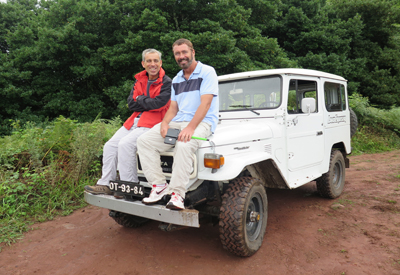 A four-wheel drive is needed to get out to the many small villages and hiking trails. It’s best to let the locals drive. Thankfully, Paul and Sheryl met up with local friend and former harbourmaster, Jose Luis Ramos Nobrega to chauffeur them.
A four-wheel drive is needed to get out to the many small villages and hiking trails. It’s best to let the locals drive. Thankfully, Paul and Sheryl met up with local friend and former harbourmaster, Jose Luis Ramos Nobrega to chauffeur them.
What strikes you the first time you see Madeira is the landscape of towering cliffs and cloud-covered mountains with peaks of more than 1,800 metres above sea level. The mountains create a lot of rain on the north coast and over the centuries a huge network of small irrigation ditches called “levadas” have been built to carry water to the sunny south where most of the crops are grown in the island’s fertile volcanic soil. The paths along them have become popular hiking trails with great views of the island’s interior.
Madeira is called the “Garden of the Atlantic” and for good reason. Just about every type of fruit, vegetable and flower is grown here in its three climate zones – tropical, temperate and alpine. Not only that, the seas are rich with marine life and the fishing industry is well established.
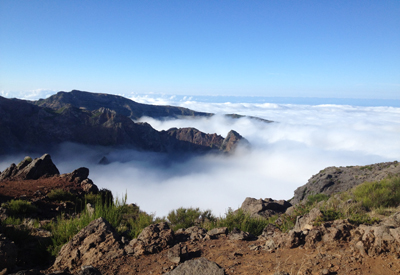 Pico Ruivo is the highest point on the mountainous island of Madeira standing at 1862 metres above sea level. At the summit, you get spectacular views over the entire island and are often looking down on the clouds. The climb to the top of Pico Ruivo provides a challenging workout. Alternatively you can get there by car or bus.
Pico Ruivo is the highest point on the mountainous island of Madeira standing at 1862 metres above sea level. At the summit, you get spectacular views over the entire island and are often looking down on the clouds. The climb to the top of Pico Ruivo provides a challenging workout. Alternatively you can get there by car or bus.
The capital city of Funchal is situated in an old volcanic amphitheatre and protected from the predominant northeast winds making it nice and warm with gentle breezes. The commercial port here accommodates up to four cruise ships daily, in season. Thankfully, there is also a small recreational marina too that offers transient dockage, albeit limited.
Although Funchal is busy and noisy, it is also charming and convenient to every amenity including the bus station offering frequent and reliable service to most points on the island. During our first visit, we took advantage of the public transportation system but luckily, a local friend and the former harbourmaster, Jose Luis Ramos Nobrega, spotted us being interviewed by a local TV crew and came down to the marina to reconnect and offer to drive us back to hike the beautiful levadas trails.
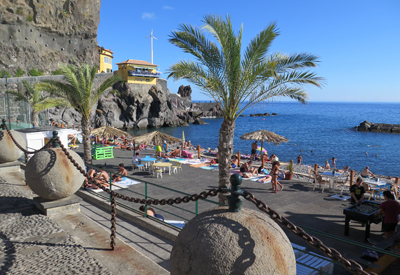 Fajã dos Padres is located on the south coast of Madeira Island, at the bottom of the famous promontory ‘Cabo Girão’, the second highest cliff in the world. Pictured here is a concrete beach made on a small fajã.
Fajã dos Padres is located on the south coast of Madeira Island, at the bottom of the famous promontory ‘Cabo Girão’, the second highest cliff in the world. Pictured here is a concrete beach made on a small fajã.
We also spent a relaxing day at Fajã dos Padres, not far from town, located at the bottom of the famous promontory ‘Cabo Girão’, the second highest cliff in the world. ‘Fajã’ is a Portuguese word for landfall; ‘Padres’ means priests – so, Fajã dos Padres means a landfall once belonging to priests. Until 1998, it could only be accessed from the sea. Now, a modern glass elevator takes you 350 meters down the cliff.
It has a microclimate here – good for growing grapes, papayas, mangos, avocados, bananas, passion fruit and guava. And according to the locals, the best Malmsey wine is also produced here.
Leaving Marina Funchal, we headed east along the south coast of Madeira passing the astonishing runway extension built on enormous pillars along the water’s edge to create a flat surface to accommodate 747s landing there. Surprisingly, there is a boat yard under it, Rep Maritima; in fact, we left our boat there – it’s so tall you can leave the mast up and it’s covered. How great is that!
Our route that day took us to the farthest most eastern point of the island to check out the new Quinto do Lorde Resort Hotel and Marina located on the remote peninsula of Ponta de São Lourenço. Formerly, a place of worship owned by the Regular Canons of the Holy Cross, it was purchased by its current owner, Quinta do Lorde S.A. in 1996 and converted into an inn. The marina was completed in 2002 and has become home to cruising sailors as well as a welcome port for international regattas.
After a few days of relaxing (as well as some great hiking) at Marina Quinto do Lorde enjoying its beautiful facilities including the restaurants, swimming pools, gym and spa – we set off for the island of Porto Santo, 30 nm to the east, passing the lighthouse and dramatic rock formations at the tip of Ponta de São Lourenço.
It was a light wind day and eventually we had to drop sails and motor the rest of the way, when the motor suddenly quit. We’d run over a huge submerged drifting fishing net that was now firmly tangled in our propeller. Paul had to don snorkeling gear to cut the net loose. We gingerly started the motor again and were happy to find that all was well.
We proceeded on to Porto Santo that, in contrast to the mountainous rocky island of Madeira, is a low-lying sandy island with a magnificent 9 km long crescent beach. The sand here is said to have healing minerals in it to relieve arthritic aches and pains and help broken bones mend more quickly. During our visit here, we witnessed several people buried up to their necks apparently healing themselves in the golden sand.
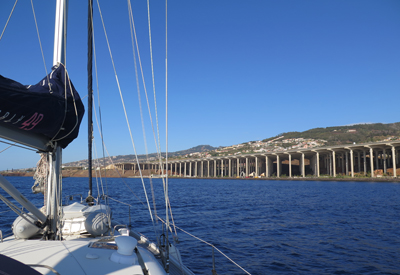
The runway of the international airport in Madeira is a sight to behold since it is mostly a man-made extension between a couple of rare pieces of flat land at the water’s edge. The airport is considered one of the most perilous airports in the world due to its location and spectacular runway construction. 747’s land here.
The marina on Porto Santo is owned by Marina Quinto do Lorde and has the same high standards and excellent staff. Although the facilities are basic, there is an excellent boat yard there where many cruising sailors have major work done (to their boats) as well as having the option to store their boats during the winter months.
Porto Santo was at one time home to Christopher Columbus who married Filipa Moniz, daughter of the founder and first Governor of Porto Santo, Bartolomeu Pestrelo.
Today, you can visit the Casa Museu Cristóvão Colombo – rumoured to be his home – in Vila Baleira, where you can view diagrams of the great explorer’s journeys, copies of 15th and 16th-century maps, and a model of one of his boats.
Other than the museum, Porto Santo is a quiet beach retreat for Madeirans, the Portuguese and other Europeans, who arrive by small plane, ferry or on their own boats. It’s also a place where sailors often get “washed ashore”– where they come and never want to leave.
 The popular alternative to the small marina in Funchal is the beautiful Quinto do Lorde Resort Hotel and Marina. It’s proximity to the island of Santa Maria and the Desertas makes it a good base for cruising the Madeira Archipelago. The friendly staff tell the Shards they work hard to make it the best place for sailors in the whole Atlantic! Many European cruisers store their boats here and the resort facilities – pools, restaurants, and hotel rooms – are a nice perk if you want a few days ashore.
The popular alternative to the small marina in Funchal is the beautiful Quinto do Lorde Resort Hotel and Marina. It’s proximity to the island of Santa Maria and the Desertas makes it a good base for cruising the Madeira Archipelago. The friendly staff tell the Shards they work hard to make it the best place for sailors in the whole Atlantic! Many European cruisers store their boats here and the resort facilities – pools, restaurants, and hotel rooms – are a nice perk if you want a few days ashore.
People often say you that if you’ve had a good time visiting somewhere not to go back because change is inevitable. We did not find that. The things we loved about Madeira in 1991 are still there unchanged and equally wonderful; the things that we didn’t like – poor roads, limited facilities for yachtsmen, and difficult communications – have greatly improved along with the economy. We see every voyage as a fresh experience and look forward to visiting Madeira again in the future to see what new wonders will be revealed.
Paul and Sheryl Shard have been traveling and living aboard sailboats since 1989, sharing the experiences of their global voyages as they go in magazine articles, books and the Distant Shores sailing adventure TV series. You can follow their adventures on www.distantshores.ca.

